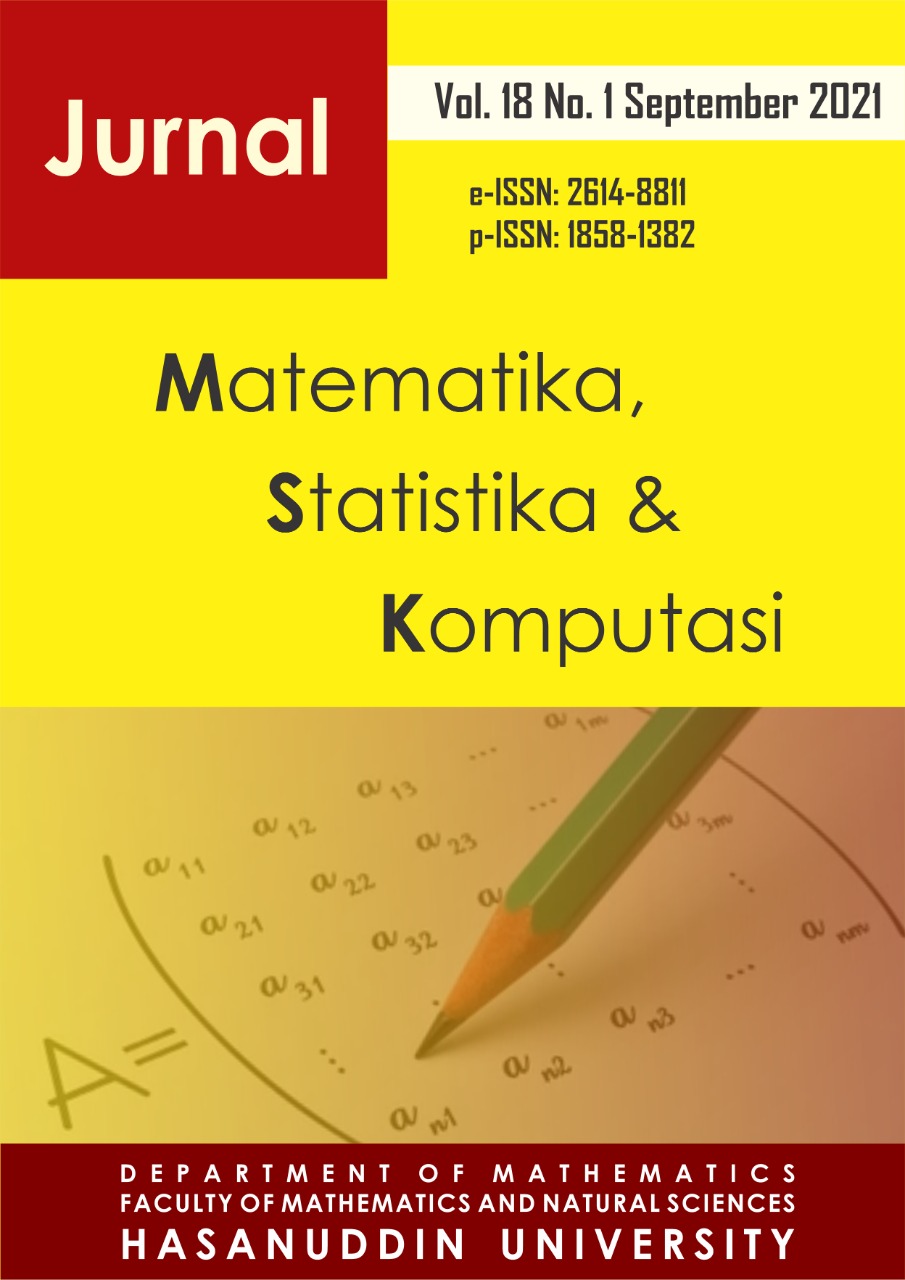Modeling of Sea Surface Temperature through Fitting Linear Model with Interaction
DOI:
https://doi.org/10.20956/j.v18i1.13987Keywords:
Linear Fitting Model, Interaction and Transformation ff Covariates, R2, AICAbstract
Sea surface temperature (SST) is one of the attributes of the world climate system and global warming. The relationship between SST and other climate parameters can be represented in a linearity approach. Through this approach, SST variability shows monthly and yearly effects. Information on these two time effects is important for knowing the period of peak effect as well as other statistical measures in the linear fitting model. The models used include transformation and without covariate transformation, interaction and without covariate interaction, and with centering and with the addition of time covariates in the model. The linear fitting model chosen as the basis for construction is a model with a combination effect of covariate interaction and transformation giving an increase in the magnitude of multiple R2 (56.62%) and adjusted R2 (56.13%) respectively 0.31% and 0.43%. This indicates that the time covariate has a very strong significant effect on the model compared to the continuous covariate. In general, the model has a statistical significance of p-value < 2.2e-16, as well as for the time covariate. However, because the model has an autocorrelation and a large AIC value, this effect is removed by means of an autoregressive moving average. The obtained linear fitting model for SST data is the model with AIC 403.2987.
References
Alvin C., & G. Bruce S., 2008. Linear Models in Statistics. Second Edition. John Wiley & Sons Inc., New York.
Clara D., Michael A., Shang P., & Adam S., 2010. Sea Surface Temperature Variability: Patterns and Mechanisms. The Annual Review of Marine Science, Vol. 2, No. 1, 115–143.
Friedrich A., Shang P., & Julian P., 2009. Indian Ocean Circulation and Climate Variability. Reviews of Geophysics, Vol. 47, No. RG1002, 1–46.
Gerald R., & Mark J., 1998. Detecting Climate Signals in The Surface Temperature Record. Journal of Climate, Vol. 11, No. 4, 563–577.
Grant B., 1985. Analysis of General Circulation Model Sea Surface Temperature Anomaly Simulations Using a Linear Model, Part I: Forced Solutions. Journal of The Atmospheric Sciences, Vol. 42, No. 21, 2225—2241.
Hastie T., Tibshirani R., & Friedman J., 2001. The Elements of Statistical Learning. Springer., New York.
Hastie T., Tibshirani R., & Friedman J., 2008. The Elements of Statistical Learning: Data Mining, Inference, and Prediction. Second Edition. Springer., New York.
James G., Witten D., Hastie T., & Tibshirani R., 2013. An Introduction to Statistical Learning. Springer., New York.
Jan R., Bertrand M., & Chris M., 2011. Global Warming and Local Dimming: The Statistical Evidence. Journal of The American Statistical Association, Vol. 106, No. 494, 452–464.
Raymond H., Douglas C., G. Geoffrey V., & Timothy J., 2010. Generalized Linear Models. Second Edition. John Wiley & Sons Inc., New Jersey.
Shang P., Clara D., Gabriel A., Jian M., Haiyan T., & Andrew T., 2010. Global Warming Pattern Formation: Sea Surface Temperature and Rainfall. Journal of Climate, Vol. 23, No. 4, 966–986.
Weisberg S., 2005. Applied Linear Regression, Third Edition. John Wiley & Sons Inc., New Jersey.
Downloads
Published
How to Cite
Issue
Section
License
Copyright (c) 2021 Author and publisher

This work is licensed under a Creative Commons Attribution 4.0 International License.

This work is licensed under a Creative Commons Attribution 4.0 International License.
Jurnal Matematika, Statistika dan Komputasi is an Open Access journal, all articles are distributed under the terms of the Creative Commons Attribution License, allowing third parties to copy and redistribute the material in any medium or format, transform, and build upon the material, provided the original work is properly cited and states its license. This license allows authors and readers to use all articles, data sets, graphics and appendices in data mining applications, search engines, web sites, blogs and other platforms by providing appropriate reference.







